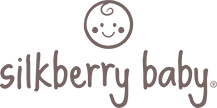
14 Ingredients to Avoid in Your Baby Products
Babies are especially delicate and they are more prone to irritations, rashes, and other effects of chemicals in our everyday products. It’s important to make sure we aren’t putting damaging substances in or on our babies’ bodies. Here’s a list of ingredients you should avoid in baby products:
1. Parabens – Parabens is a group of preservative chemicals used in cosmetics and food. It prevents the growth of organic compounds in products. These are known hormone disruptors that lead to reproductive problems and breast cancer. Babies need their hormone levels left alone so they can develop properly. Check the ingredients list on a product for anything that ends with “-paraben.”
2. Coloring – Synthetic colors are made with petrochemicals and heavy metals. They can cause irritation with any tissue they touch. Babies don’t care what color their lotion or shampoo is.
3. BPA (Bisphenol A) – This is a chemical that hardens plastics. It’s linked to early puberty and disrupted hormone levels. These days, most children’s products are made without BPA, it’s found in the lining of food packages, cans and plastic home goods.
4. Phthalates – Phthalates are used to soften plastics to make them flexible. It’s also linked to hormone disruption and development problems in children. It’s been banned for use in most children’s products, but it’s still used in products children contact (like raincoats, shower curtains, backpacks, pool toys, soaps, lotions, and perfumes.
5. Flame retardants – Found in plush products, furniture, pillows, mattresses and carpeting, flame retardants are not bonded to the material they cover, so they are easy to ingest with simple contact. They cause reproductive damage and affecting motor and learning skills.
6. Pesticides – You know these aren’t healthy, but you might think “why would these ever touch my baby?” Pesticides used in your lawn can leach into the ground water and your well, which feeds into your home for drinking and bathing. Small children and babies have an increased exposure to pesticides because they drink more water in relation to their weight than adults.
7. Lead – Found in the paint of older homes, lead stunts growth, damages the kidney and liver, and causes delayed development in children. It can also affect the nervous system. It’s banned for use in paint now, but if your home was built in the 70s or earlier, you should test the paint.
8. Talc – This is a drying agent added to foot powders and baby powder. It’s a mineral that’s dangerous to the lungs if inhaled. Honestly there’s no reason to use baby powder; moist skin is healthy!
9. Propylene glycol – Designed to open up your pores to allow other ingredients inside, propylene glycol is a carcinogen that’s easily absorbed in the skin. It blocks your skins ability to repel other dangerous chemicals.
10. Triclosan – If something is antibacterial, it likely uses triclosan. This is a carcinogenic endocrine disrupter that destroys bacteria that’s usually pretty safe. In fact, raising a baby in a perfectly sterile environment robs their immune system of natural resistances and immunities.
11. Fragrance – This is a scary category because it can include pretty much anything. The fragrance labels allows manufactures to hide ingredients for proprietary reasons. Some products have hundreds of chemicals hidden in “fragrance.” If a product adds a scent or flavor to a product, they shouldn’t be ashamed to tell you what they used to make it.
12. Phthalates – Phthalates are “xeno-estrogens,” meaning they make the body think there’s enough estrogen and not to make any more, but they don’t fulfill estrogen’s role, so your body is lacking. This is very dangerous for babies and children who need their hormones for proper development.
13. Formaldehyde – This is a preservative added to liquid products to prevent mold. It’s a human carcinogen that causes respiratory problems, nausea and headaches.
14. 1,4-dioxane – This is a chemical byproduct, meaning it won’t be on product labels. It’s made in the reaction of other chemicals (as if you didn’t think you had enough to worry about). 1,4-dioxane is a possible carcinogen that’s linked to organ toxicity and allergies. Avoid it by avoiding products with sodium laureth sulfate and PEG compounds.
If you avoid these ingredients, you and your family will live safer lives. Here at Silkberry Baby ® we use safe and healthy materials when creating our eco baby and toddler clothing with these unique features:
-
 Unique silky touch shown to calm baby
Unique silky touch shown to calm baby - Safe and healthy material; no synthetic fibers
- Breathable and absorbent (wear year-round)
- Anti-static and sensitive-skin friendly
- Non-irritating and hypo-allergenic
- Easy care and machine washable
- Eco-friendly and sustainable practices used in development
- Oeko-Tex 100 certified
- Mom invented and designed
Written by Carrie Shan, Founder of Silkberry Baby
Silkberry Baby is an organic baby clothing brand located in Vancouver, British Columbia, Canada. Developed by Carrie Shan, a mother of two young children, the range was conceived to create a baby bedding and clothing product range as her daughter had an allergic reaction to synthetic fibres. After much research, she sourced natural, eco-friendly and sustainable fibers (mulberry silk floss and bamboo) that she found to be the best natural choices available for baby and toddlers' bedding and clothing.
Interested in writing a guest blog for Silkberry Baby? Send your topic idea to pr@silkberrybaby.com.
All data and information provided on this site is for informational purposes only. Silkberry Baby makes no representations as to accuracy, completeness, current-ness, suitability, or validity of any information on this site and will not be liable for any errors, omissions, or delays in this information, or any losses, injuries, or damages arising from its display or use. All information is provided on an as-is basis.

 Unique silky touch shown to calm baby
Unique silky touch shown to calm baby